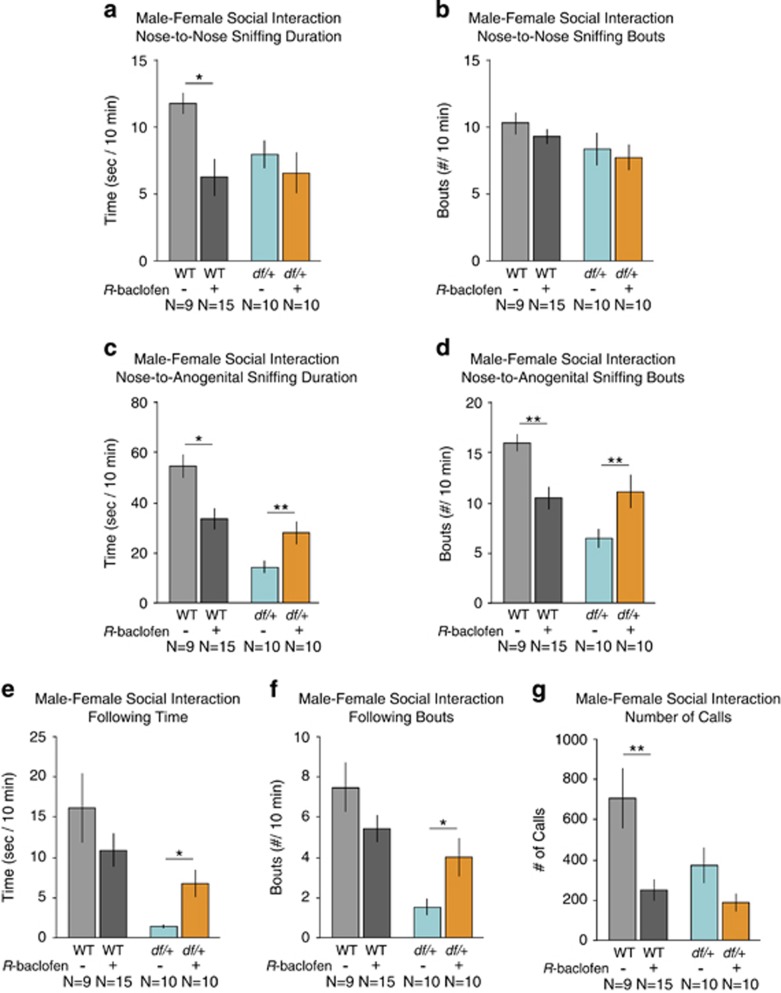Figure 5.
16p11.2 df/+ male mice displayed lower scores on some parameters of male−female social interactions, which were reversed by R-baclofen treatment. Male 16p11.2 df/+ mice engaged in less reciprocal social interactions with an estrous female on some parameters, as compared with wild-type littermate controls. R-baclofen increased sociability in 16p11.2 df/+ male mice. Although R-baclofen did not significantly affect nose-to-nose sniffing in 16p11.2 df/+ mice (a, b: df/+: t(18)=0.129; p=0.899, NS; WT: t(22)=2.12; p<0.05), R-baclofen treatment significantly increased nose-to-anogenital sniffing in 16p11.2 df/+ mice on measures of time spent (c: df/+: t(18)=2.14; p<0.05, WT: t(22)=0.913, p=0.371, NS) and number of bouts (d: df/+: t(22)=2.94, p<0.01; WT: t(18)=1.12, p<0.05) and on time spent following the female (e: df/+: t(18)=2.66, p<0.05; WT: t(22)=1.16; p=0.260, NS) and the number of following bouts (f: df/+: t(18)=2.15, p<0.05; WT: t(22)=1.52, p=0.143, NS). (g) R-baclofen had no effect on the number of ultrasonic vocalizations emitted by 16p11.2 df/+ males (t(18)=1.56, p=0.134; NS)) but significantly reduced the number of ultrasonic vocalizations in WT (t(22)=2.87; p<0.01). Decreased scores appeared in WT treated with R-baclofen on measures of time spent in nose-to-nose sniffing, nose-to-anogenital sniffing, and the number of vocalizations, for unknown reasons, which do not appear to include sedation. *p<0.05, **p<0.01, R-baclofen vs vehicle within genotype.

